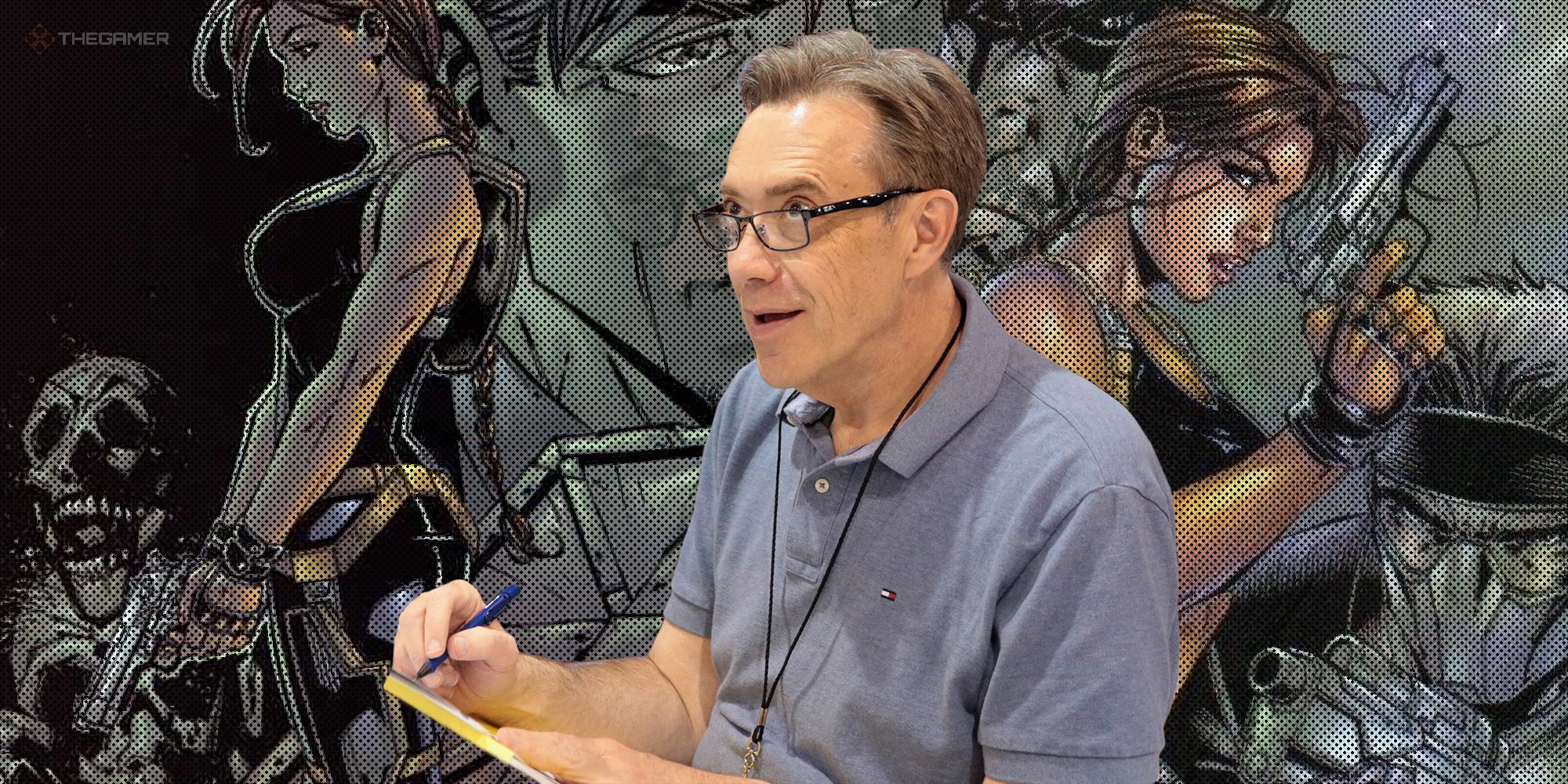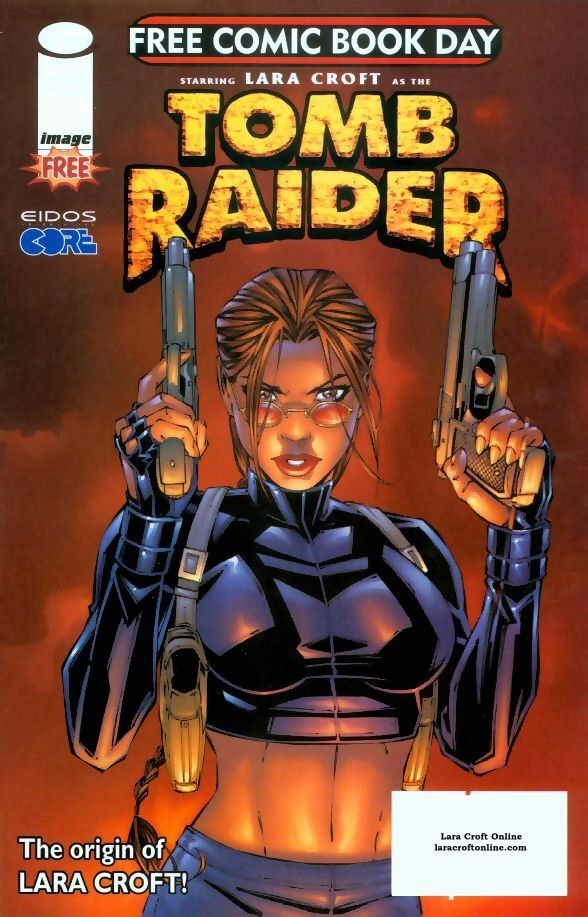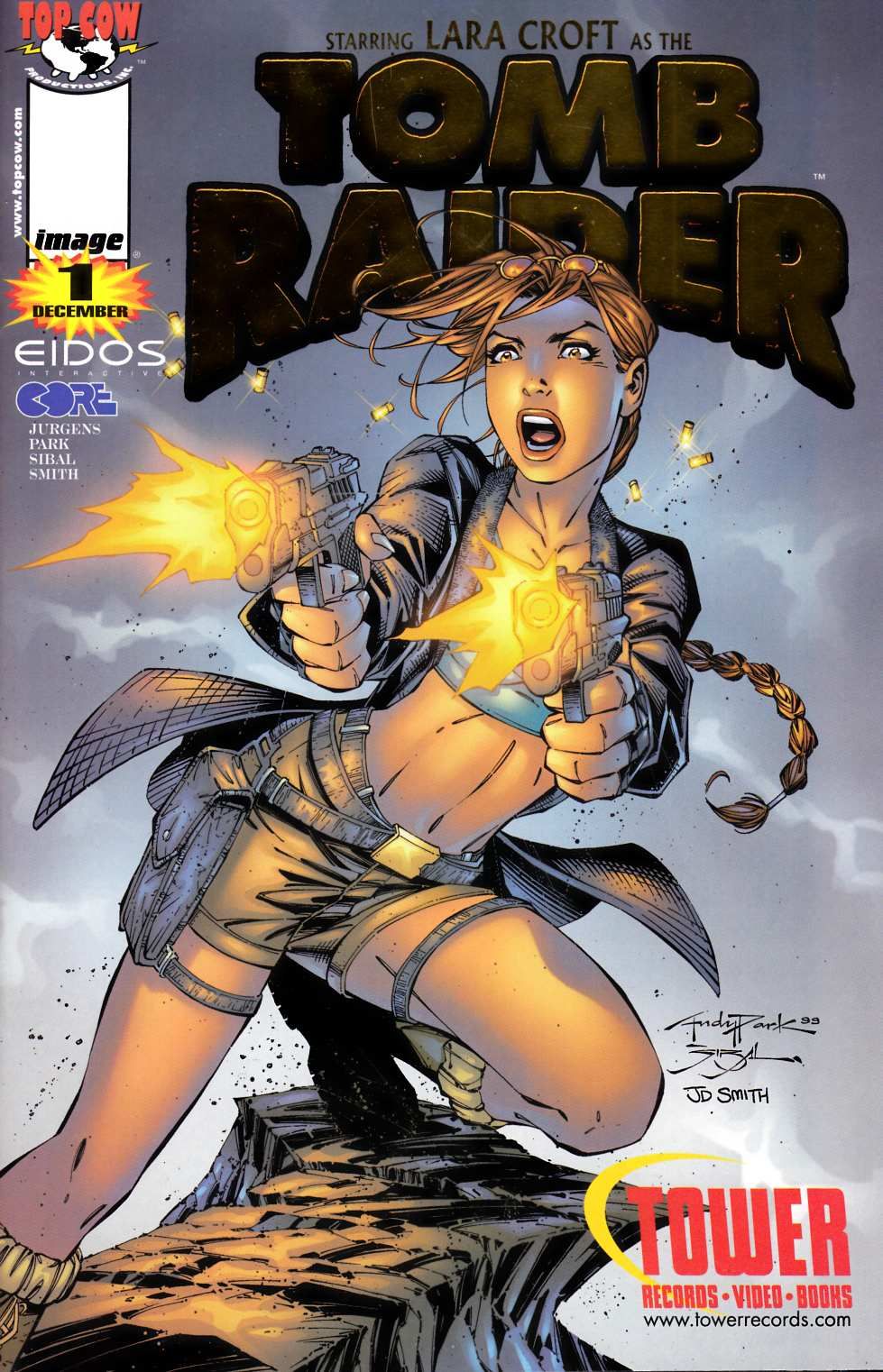In the late ‘90s, Tomb Raider was everywhere. She had a string of successful video games, the Angelina Jolie-led movie was in the works, she graced the front of Time Magazine, and starred in a multitude of adverts for the likes of Visa and Lucozade. Unsurprisingly, she also had a successful comic book run, but unlike the Lucozade adverts, these don’t seem as firmly folded into her legacy.
“It's weird because from a publicity standpoint or a press standpoint, people have forgotten it,” Dan Jurgens, the writer of the comics tells me. “But when I was just at a convention in Detroit a couple of weeks ago, I had not been there for a long, long time. And whenever I'm in a market that I haven't been for a number of years, I get books that go back quite a ways and people bring up to get them signed, and I had a lot of Tomb Raiders that were putting in front of me, and it was great to see and again, it never fails. The amount of people when they bring me their Tomb Raider comics, I'm gonna say probably 40 percent of them are women. And that is not my typical experience with my other projects. That's great to see. And a lot of them would have been in that 13-17 year old age range when the games first started coming out. I still get a tremendous number of women who are bringing me their books, and they might have been young girls at the time, or their teens or college years or whatever, but they were definitely into that franchise.”
While the world does not remember the Tomb Raider comics as well as Lara's excursions into other forms of media, that’s no comment on the comics themselves, which were hugely successful in their heyday. “The year our first issue came out, it was the best selling book that year,” Jurgens says. “Lara Croft, number one, was the best selling book our industry had that year. The sales on those issues really was health. And then what really brings it home is even to this day, when I am doing a signing somewhere, be it in a convention or a store, there are people who come in, and they have quite a stack of Tomb Raider comics.”
In the ‘90s, far more even than they are now, the gaming and comic book industries were dominated by male characters, male fans, and male marketing. Lara Croft had been able to overcome that in gaming, but in 1999 when the first comic appeared, some doubted lightning would strike twice. Reflecting back, Jurgens isn’t sure there was ever that much to worry about.
“It's probably not, as we look back on it, that much of a surprise,” he says. “She was far and away the pre-eminent female property that would have been on the market at that point for games. And the other part of it is, it was a great game. Those games were a lot of fun. She was highly capable, so what young girl or woman would not probably enjoy playing the game? I think it all adds up. We probably just didn't quite realise it at the time.”
Of course, as Jurgens touches on there, Lara’s success in the gaming and comic book worlds was not just down to her gender. The reason people didn’t think female comic books sold well was because, historically, they didn’t. It needed figures like Lara, and other female superheroes like her, to shatter the glass ceiling. Lara though is not a superhero, and with Jurgens bringing experience from the likes of Superman and Spider-Man, you’d expect there would be a challenge in writing for an underpowered heroine like Lara Croft. According to Jurgens though, the challenge came not from the conventions of comic books, but from the conventions of gaming.
“Think about the video game,” he says. “Let's say Lara is in the first chamber of a pyramid, or something like that. And invariably, the contest is she finds the magic brick to touch three times, and then it opens up to reveal the key or whatever, right? Somehow, she could always find the tool that she needed, the device that she needed to get to the next chamber. In the comic, you couldn't have 20 pages of Lara searching that chamber to find whatever that magic device was. We had to make her a little more capable. It might be defeating a foe, or being smart enough to find the right brick, within two pages rather than 20 pages. In the game, you get stuck, and you'd spend three or four days just trying to find the right thing. You can't do that in the comic. We actually made her more capable in the comic stories just for the expediency of being able to move the story along.”
While comic books and video games are the two most action packed forms of media, there are substantial differences in how they tell their stories - the interactivity being the largest. This means a different style of storytelling is needed to convey the same ideas. “As a writer, you ask yourself, ‘Why are people going to pick up this book?’,” Jurgens says. “It's probably going to be a lot of video game players who expect some of the same sensibilities and story ideas from the games to be translated into the comic, right? If you think about playing a video game, it's a progressive story. Lara enters the cave. Lara goes deeper into the cave. Lara encounters a hurdle to get around, or a challenge, or things like that. You reach the end. It's more plot oriented, where I think a comics story has to be a little more character oriented, with more additional characters instead of Lara Croft alone against the chasm that she somehow has to find her way across. The idea was to supply the atmosphere of the video game, while also supplying a little bit more of a story. We had to build out the story, and make it a little less about Lara's individual challenges, and more about some character interaction and things like that, that would then get her through to the end of the story.
“We might be playing a game where we see Lara standing at the edge of a cliff, and how does she get across a 100 foot wide chasm when there is no bridge? And then you go on to the next challenge, which might be how is she going to get through a wall of burning flames? That’s how the video game might have progressed. Whereas in a comic story, you needed more of an enemy in the form of a person as opposed to the challenge. Part of the [comic book] was creating that enemy that was getting in her way. Why were the enemy? Are they the enemy? Or were they competing for the same prize? That way, she could have more of a personal adversary. I think that was really important, and that's part of what made it different.”
These differences included making some tweaks to the story, beginning on the very first page. Whereas the game starts with a plane crash that kills Lara’s parents, the comic begins with a plane crash that kills her - non-existent, at least in the games - fiancé. “I thought it should be part of the story,” Jurgens says of the new angle. “The parent thing is much more common in comics. Probably you just think of Batman, and I wanted something that would be a little more individual and unique to Lara Croft. So that's why I suggested that as a change. Everybody was on board with it. I think the general feeling was once I explained how it would work and why I thought it was a good idea. Everyone agreed.”
Despite wanting to separate Lara from the Caped Crusader, when it came to comic book inspirations, he was the first port of call. “In terms of what hero she comes closest to, in many ways, I'd have to say Batman,” Jurgens says. “In part because Bruce Wayne obviously had his own money and fortune to back up what he did. I always made it clear that Lara Croft did as well. And just being highly capable as an individual without powers, I probably would compare her to Batman.”
Jurgens has enjoyed an iconic career in comic books, having written The Death of Superman - and created Doomsday in the process - as well as writing for Captain America, Spider-Man, Thor, Firestorm, Green Lantern, Nightwing, Aquaman, Batman, Teen Titans, and Justice League, but to some people, he’ll always be the Tomb Raider writer, and that suits him just fine.



